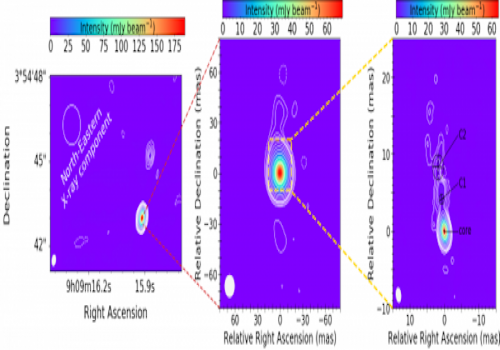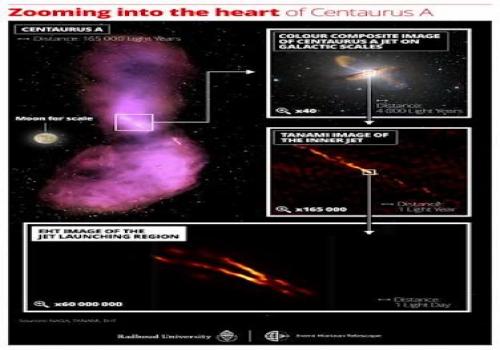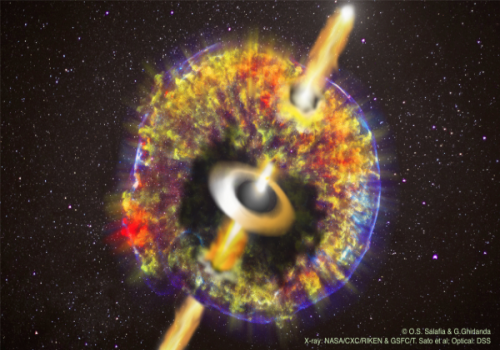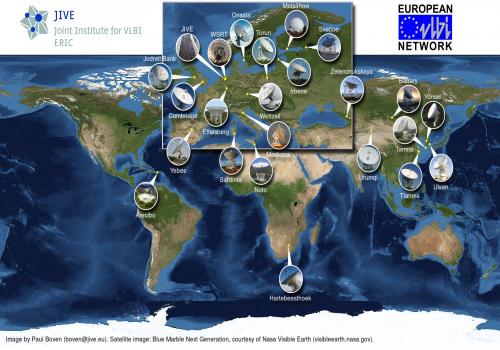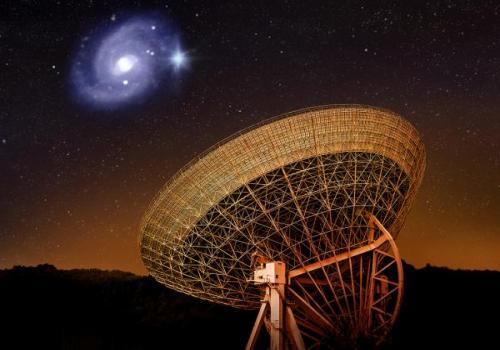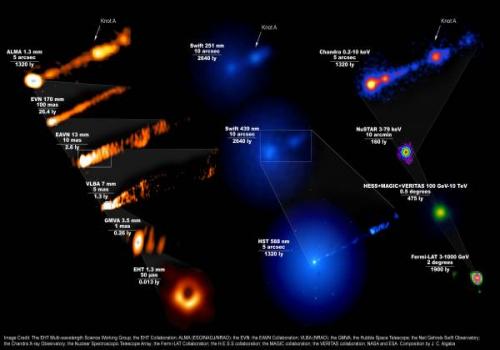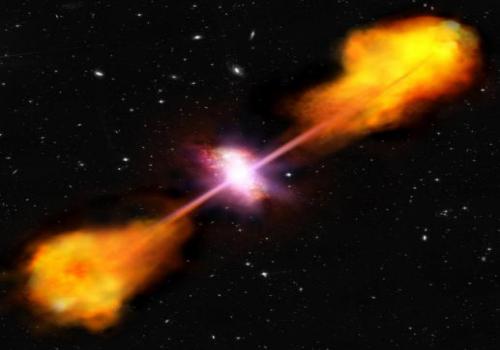News
European VLBI Network Call for Proposals is open
31/08/2021
Observing proposals are invited for the European VLBI Network (EVN). The deadline for proposal submission is 1 October 2021 at 16:00 UTC.
VLBI Session at URSI GASS 2021
11/11/2021
On 1 September 2021, the Session "Very Long Baseline Interferometry" will highlight the relevance of VLBI in the fields of astrophysics, Earth and planetary sciences. The session is co-organised by JIVE as part of the XXXIV General Assembly and Scientific Symposium of the International Union of Radio Science (URSI GASS 2021) that will be held in Rome (Italy) from 28 August to 4 September 2021
EHT pinpoints dark heart of the nearest radio galaxy
11/11/2021
An international team anchored by the Event Horizon Telescope (EHT) Collaboration, which is known for capturing the first image of a black hole in the galaxy Messier 87, has now imaged the heart of the nearby radio galaxy Centaurus A in unprecedented detail. The astronomers pinpoint the location of the central supermassive black hole and reveal how a gigantic jet is being born. Most remarkably, only the outer edges of the jet seem to emit radiation, which challenges our theoretical models of jets. This work, led by Michael Janssen from the Max Planck Institute for Radio Astronomy in Bonn and Radboud University Nijmegen is published in Nature Astronomy on 19 July 2021.
JIVE Annual Report 2020 now available
11/11/2021
The JIVE Annual Report 2020 is now available. It presents a summary of JIVE’s many activities throughout the year.
The JUMPING JIVE project supports the organisation of the "Extreme astrophysics at extremely high resolution" Special Session at the largest conference for European Astronomy
24/06/2021
On Tuesday 29 June 2021, the Special Session "Extreme astrophysics at extremely high resolution" will highlight the latest scientific results of high-resolution radio instruments, such as the European VLBI Network (EVN) and similar arrays, with particular focus on the synergies with high resolution and high energy phenomena across the electromagnetic spectrum. The session is being organised with the support of the H2020 JUMPING JIVE project as part of the European Astronomical Society 2021 (EAS 2021) Annual Meeting held virtually from 28 June to 2 July 2021.
The EVN/JIVE Newsletter #59 (May 2021 Issue) is published
04/06/2021
The May 2021 issue of the EVN/JIVE Newsletter is now available and includes relevant updates of the European VLBI Network (EVN). The May 2021 Newsletter can be accessed here.
EVN Mini-Symposium and Users Meeting 2021
10/05/2021
An online EVN Mini-Symposium and Users Meeting will be held during July 12-14, 2021. The EVN Symposium normally takes place every two years, and is the main forum for discussion of the latest Very Long Baseline Interferometry scientific results and technical and technological developments within the EVN member countries.
Famous fast radio burst FRB20180916B just barely lets itself be captured
10/05/2021
Two international teams of astronomers (with significant JIVE involvement) have narrowed-down the origin of the flashes produced in the famous fast radio burst FRB20180916B by examining them with the highest time resolution and at the lowest possible frequencies.
Telescopes unite in unprecedented observations of famous black hole
10/05/2021
In April 2019, scientists released the first image of a black hole in the galaxy M87 using the Event Horizon Telescope (EHT). However, that remarkable achievement was just the beginning of the science story to be told. Scientists from JIVE contributed to this global effort.
Black holes like to eat, but have a variety of table manners
10/05/2021
All supermassive black holes in the centres of galaxies appear to have periods when they swallow matter from their close surroundings. But that is about as far as the similarities go. That's the conclusion reached by British and Dutch astronomers from their research with ultra-sensitive radio telescopes in a well-studied region of the universe. They publish their findings in two articles in the international journal Astronomy & Astrophysics.

